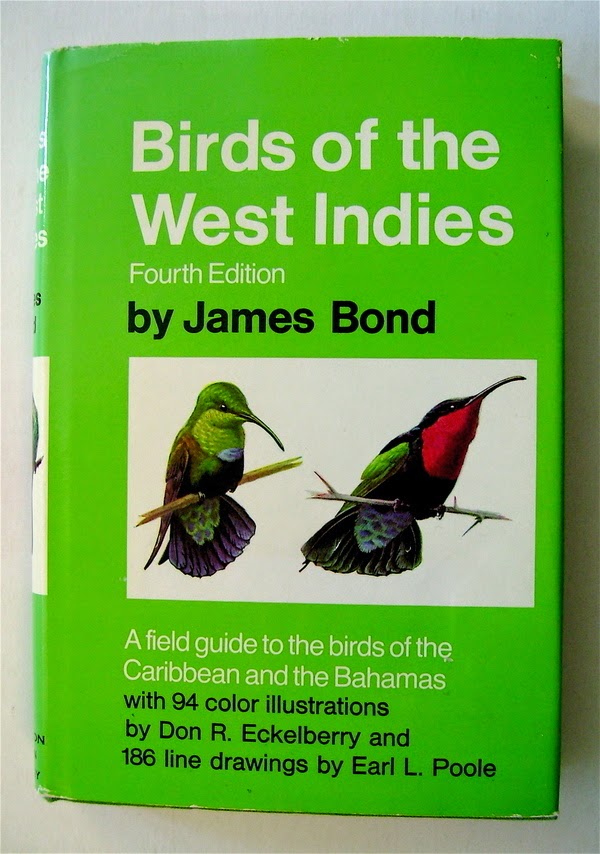It's Day 4 of Bond 365. In the world of James Bond, today's spotlight is on screenwriter Richard Maibaum, who's friendship with a legendary movie star, brought Maibaum to Broccoli's attention to adapt Ian Fleming's novels into workable screenplays. And, the second event highlights an ornithologist who's name launched one of the most recognized popular culture icon of the later half of the 20th center - James Bond!
 |
| Love this photo! |
Richard Maibaum
Passed away January 4, 1991
Screenwriter for multiple Bond films
Something happened on the way to researching Richard Maibaum
for today’s post and maybe you already know about it, but it was new for me:
Warwick Films. In 1951, Irving Allen and Albert Broccoli established their production
company in the UK in order to take economic advantage of tax
breaks by having a film company in England. In addition, the men had a lucrative agreement with Columbia Pictures where Columbia would match funds raised by Allen and Broccoli.
Here’s the part in the story where the adage “it pays to
know someone” is once again validated. Broccoli knew that megastar Alan Ladd (Shane,
This Gun for Hire) was unhappy at Paramount
Pictures, so Broccoli fostered the opportunity to bring Ladd over to Warwick Films. Ladd would
only agree to the three-film deal if his personal screenwriter co-wrote the
films. Enter Richard Maibaum. For Warwick Films, he had writing credit for The
Red Beret (1953), Hell Below Zero (1954), Cockleshell Heroes (1955), Zarak (1956, notably directed by Terence Young), and Ransom! (1956).
When Broccoli partnered with Harry Saltzman, who had the
film rights to Ian Fleming’s books, Maibaum continued as screenwriter for the
newly formed Eon Productions, starting with Dr. No (1962). Of the first sixteen
Bond films, Maibaum had writing credit for all but You Only Live Twice (1967, Roald Dahl), Live and Let Die (1973, Tom Mankiewicz), and Moonraker (1979, Christopher Wood). Licence to Kill (1989) was his last Bond script, shared with Michael
Wilson.
In an interview conducted by Lee Goldberg back in 1985 with
Maibaum and Wilson, Maibaum was quoted to say this about the Bond franchise:
“There’s no reason the Bonds can’t go on forever. Some characters are immortal
– Robin Hood, The Three Musketeers, Sherlock Holmes…and now James Bond.” Thanks
to Maibaum’s adaptations and development of filmic Bond, Bond just may go on
forever.
As an aside, Warwick Films was a breeding ground for future
Bond crew. Terence Young would go on to direct three Bond films;
cinematographer Ted Moore would work on seven; stuntman Bob Simmons worked on
many of the film and is immortalized as James Bond in the gun barrel sequence
in Dr. No, From Russia With Love, and Goldfinger; and production designer Sid Cain for a number of
early Bond films.
 |
| The real James Bond |
James Bond
Born January 4, 1900
Namesake for the most known MI6 Agent in the World
Ornithologist James Bond was one of several individuals that
inspired Ian Fleming as he composed his first novel, Casino Royale, at his tropical estate in 1952. Fleming’s list of individuals who inspired his fictional spy included his elder brother Peter, Fitzroy Maclean, Sidney Reilly, and William
Stephenson (code name Intrepid), all who had served as agents during World War
II. Yet, when it came time to name his spy, he turned a copy of Birds
of the West Indies written by James Bond.
“I wanted the simplest, dullest, plainest-sounding name I could find, ‘James
Bond’ was much better than something more interesting, like ‘Peregrine
Carruthers’. Exotic things would happen to and around him, but he would be a
neutral figure – an anonymous, blunt instrument wielded by a government
department,” Fleming said in a 1958 article printed in The Manchester
Guardian. The real Bond was apparently fine
with the use of his name.
 |
| Originally published in 1936 |
In return, Fleming offered James Bond the use of his name.
Corresponding with Bond's wife Mary, Fleming’s British wit shined as he
recommended that, “perhaps one day your husband will discover a particularly
horrible species of bird which he would like to christen in an insulting
fashion by calling it Ian Fleming.” Fleming then gave Bond a first edition of You
Only Live Twice signed “To the real James
Bond, from the thief of his identity.” The book was sold at auction in 1989
(same year that Bond died) for $84,000.
Additional nods to the real Bond have been made. For
instance, Fleming made additional references to Bond by basing an
ornithological sanctuary on Dr. No’s island. And more recent in Die Another
Day (2002), Pierce Brosnan looks at a copy
of Birds of the West Indies and later introduces himself as an ornithologist to
Jinx.
As of 2015, sadly, there is no bird named 'Ian Fleming'.


No comments:
Post a Comment
Note: Only a member of this blog may post a comment.